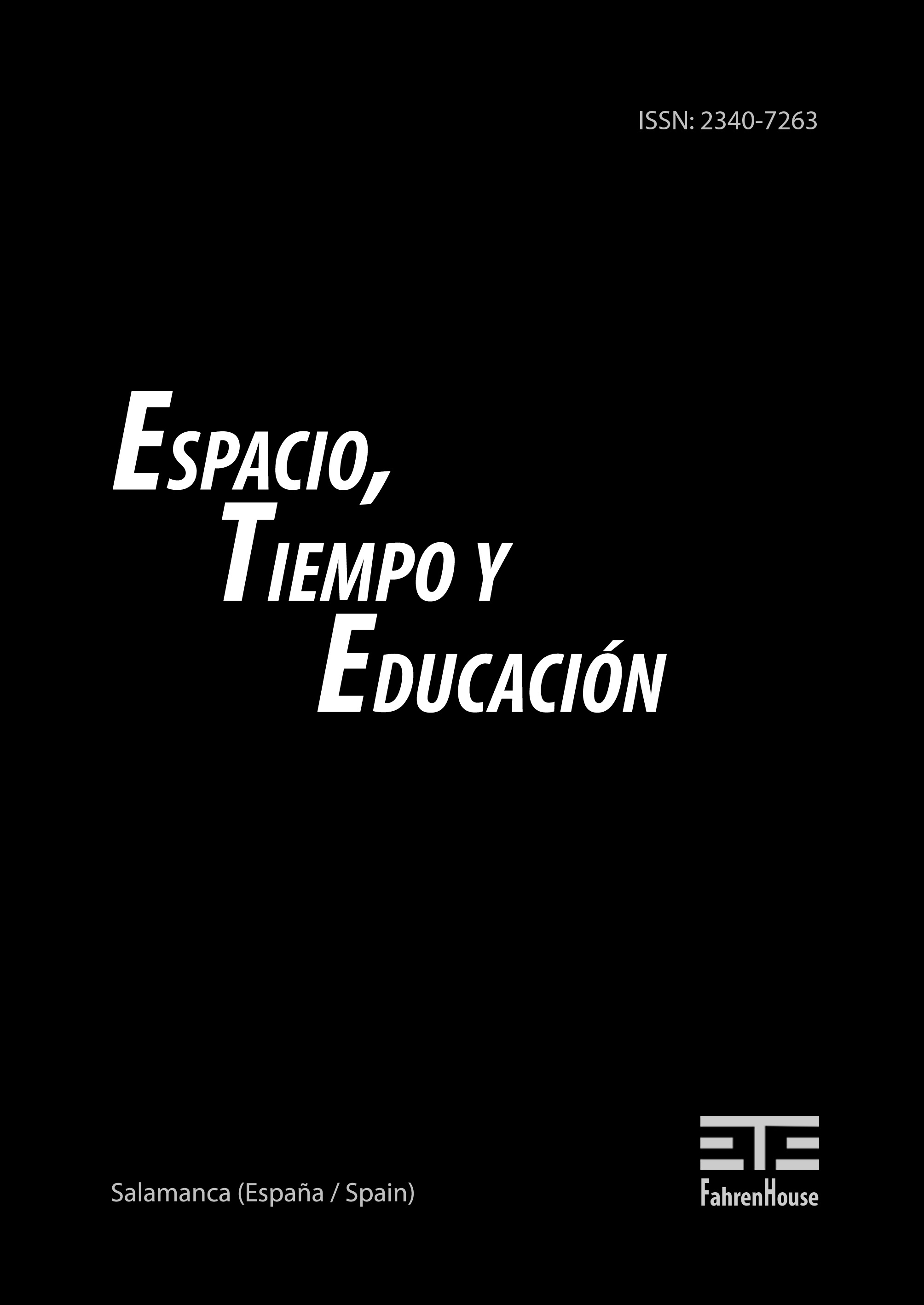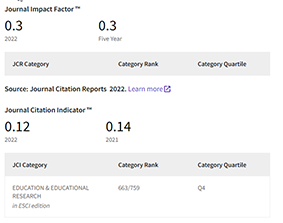History and Modern Architecture: Prellerhaus, the Bauhaus residential colleges in Dessau (1926-1932)
DOI:
https://doi.org/10.14516/ete.617Keywords:
Modern Architecture, Bauhaus, Residential CollegesAbstract
With the present article, I intend to investigate the architecture and space of the residential college of the Hochschule für Gestaltung Bauhaus (Germany), inaugurated at the beginning of the second phase of the Bauhaus, when it was forced to leave the city of Weimar and settle in Dessau, between 1926-1932. A reference for the history of modern architecture, this residence was part of the set of buildings designed by the architect Walter Gropius, who was the first director of what was to be the first design school in the world, whose expression became internationally recognized for its concept and innovative aesthetics. To produce this article, I used sources and bibliography that are mostly located at the Bauhaus-Archiv, Berlin, among which I highlight manuscripts, letters, architectural plans, photographs, manifestos and newspapers.
References
Anhalter Anzeiger, 10. Juli 1932.
Anhalter Anzeiger, 2. September 1933.
Argan, G. C. (1988). L´Arte Moderna. Dall Illuminismo ai movimenti contemporanei. Firenze: Sansoni Editore.
Argan, G. C. (1951). Walter Gropius e la Bauhaus. Turim: Giulio Eunadi Editore.
Bachelard, G. (1957). La Poétique de l’espace. Paris: Dunod.
Bauhaus. (1976). Stuttgart: Institut für auslandsbeziehungen.
Bayer, H., Gropius, W. & Gropius, I. (Edts.). (1938). Bauhaus. 1919-1928. New York: The Museum of Modern Art.
Brandt, M. (1985) Brief an die junge Generation. In: NEUMANN, E. (Hrsg.). (1985). Bauhaus und Bauhäusler. Bekenntnisse und Erinnerungen. Stuttgart: Bern Hallwag Verlag.
Cobbers, A. (2009). Marcel Breuer (1902-1981). Köln:Taschen Verlag.
Droste, M. (1980). Georg Muche. Das ktinstlerische Werk 1912-1927. Berlin: Bauhaus-Archiv Berlin.
Droste, M. (1990). Bauhaus. 1919-1933. Köln: Benedikt Taschen.
Düchting, H. (2000). Wassily Kandinsky, 1866–1944: a revolution in painting. Munich: Taschen.
Engelbrecht, L. C. (2009). Moholy-Nagy: Mentor to Modernism. Cincinnati: Flying Trapeze Press.
Franz, S. (2019, november). Bauhaus und der Nationalsozialismus. Die Heimat. 144-150.
Franz, E. & Hirt, P. (Hrsg). (1999). Fritz Levedag, 1899–1951. Die Jahre in Ringenberg. Münster: Westfälisches Landesmuseum für Kunst und Kulturgeschichte.
Gay, P. (1970). Weimar Culture. The outsider as insider. New York: Haper Torchbooks.
Giedion, S. (1992). Raum, Zeit, Architektur. Die Entstehung einer neuen tradition. München: Artemis.
Gropius, W. (1919). Das Programm des Staatlichen Bauhauses in Weimar, 3p. Bauhaus-Archiv, Berlin.
Gropius, W. (1923). Idee und Aufbau des Staatlichen Bauhauses Weimar. München: Bauhaus verlag. Bauhaus-Archiv, Berlin (BHA).
Gropius, W. (1930a). Walter Gropius. Cercle et Carré. Organe du Groupe International «Cercle et Carré», n. 30, 30 juin, p. 7.
Gropius, W. (1930b). Bauhausbauten Dessau. In: Walter G. und László, M-N., Bauhausbücher 12. München: Albert Langen Verlag.
Gropius, W. (1943). Scope of Total Architecture. New York: Haper and Row Publishers.
Herzogenrath, W. (1973). Oskar Schlemmer. Die Wandgestaltung der neuen Architektur: mit e. Katalog seiner Wandgestaltungen 1911-1942 (Fotografien, Vorstudien, Zeichn.) München: Prestel Verlag.
Isaacs, R. R. (1983). Walter Gropius. Der mensch und sein werk. 2 Bände. Berlin: Gebr. Mann Verlag.
Isaacs, R. R. (1991). Gropius: an illustrated biography of the creator of the Bauhaus. Boston: Little Brown and Company.
Iwao, Y. (1985). Reminiscences of Dessau. Design Issues, vol. 2, n.2, p 56-68.
Krajewski, M.S. (1976). Meine Lehr - und Ausbildungsjahre am Bauhaus. In: 50 Jahre Bauhaus Dessau, Wissenschaftliche Zeitschrift der Hochschule für Architektur und Bauwesen.
Luckhardt, U. (1989). Lyonel Feininger. München: Prestel Verlag.
Markgraf, M. (Hrsg.). (2007). Archäologie der Moderne: Sanierung Bauhaus Dessau. Dessau: Jovis Verlag.
Marcks, G. (1977). Gerhard Marcks. Das plastische werk. Berlin: Frankfurt am Main, Wien: Propyläen.
Müller, M. (1975). Das Leben eines Architekten, Porträt Richard Paulick. Halle: Mitteldeutscher Verlag.
Munder, H. & Gygax, R. (Hrsg.). (2015). Xanti Schawinsky. Zürich: JRP Ringier Verlag.
Nebel-Heitmeyer, H. (1946, 20. april). Die Grunow-Lehre: eine Erziehung der Sinne durch Ton und Farbe. Schweizerische Lehrerinnen-zeitung, Heft 14, 50. Jahrgang.
Nerdinger, W. (1985). Walter Gropius. Der architect Walter Gropius. Zeichnungen, Pläne, Fotos, Werkverzeichnis. Berlin: Gebr. Mann Verlag.
Nerdinger, W. (Hrsg.). (1993). Bauhaus-Moderne im Nationalsozialismus: Zwischen Anbiederung und Verfolgung, München: Prestel Verlag.
Neumann, E. (Hrsg.). (1985). Bauhaus und Bauhäusler. Bekenntnisse und Erinnerungen. Stuttgart: Bern Hallwag Verlag.
Neumeyer, F. (1986). Mies van der Rohe: Das kunstlos Wort. Gedanken zur Baukunst. Berlin: Wolf Jobst Siedler.
Otto, E. (2005). Tempo, Tempo! Bauhaus Photomontagen von Marianne Brandt. Berlin: Jovis Verlag.
Partsch, S. (2007). Paul Klee (1879-1940). Köln:Taschen Verlag.
Rehm, R. (2005). Das Bauhausgebäude in Dessau. Die Ästhetischen Kategorien Zweck form Inhalt. Berlin: Gebr. Mann Verlag.
Ridler, M. J., (2022). Color and Architecture: Walter Gropius and the Bauhaus Wall-Painting Workshop in Collaboration, 1922-1926, Architectural Histories, 10 (1): 4, p.1-27.
Rotzler, W. & Itten, A. (1972). Johannes Itten: werke und schriften. Zürich: Orell Fussli Verlag.
Schawinsky, A. (1998). Autobiographie-Fragment typoskript. In: KENTGENS-CRAIG, M. (Hrsg.). (1998). Das Bauhausgebäude in Dessau 1926–1999. Basel: Birkhäuser Verlag.
Schawinsky, A. (1995). Autobiography fragment typescript. In: FORGÁCS, E. (1995). The Bauhaus Idea and Bauhaus Politics. Budapest; London; New York: Central European University Press.
Schuldenfrei, R. (2013). Images in Exile: Lucia Moholy’s Bauhaus Negatives and the Construction of the Bauhaus Legacy. History of Photography, n. 2, p. 182-203.
Sudhalter, A. (2010). 14 years Bauhaus: a chronicle. In: Bergdol, B.; Jonhson, P. & Dickerman, L. (2010). Bauhaus 1919-1933: workshops for modernity. New York: The Museum of Modern Art, p. 323-337.
Swenarton, M. (1987). The Role of History in Architectural Education. Architectural History, 30, 201-215.
Thöner, W. & Perren, C. (2018). Carl Fieger. From Bauhaus to Bauakademie. Berlin: Kerber Verlag.
Viñao, A. (1998). «L´espace et le temps scolaire comme objet de l´histoire», en Histoi-re de l´Éducation. n. 78, p. 89-108.
Vitruve, M. (1847). De l’Architecture. Tome premier. Paris: C.L.F. Panckoucke Éditeur.
Welteg, S. W. (1993). Women’s work. Textile art from the Bauhaus. San Francisco: Chronicle Books.







